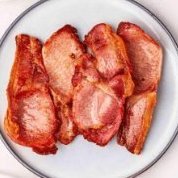Fish Pond Cleaning
-
Recently Browsing 0 members
- No registered users viewing this page.
Announcements
-
Topics
-
-
Popular Contributors
-
-
Latest posts...
-
21
UK Migrant Arrested for Allegedly Entering Blind Woman's Flat
Dude looks like evil personified. Like a child soldier who would put a bullet in someone’s head without a second thought. Anybody who can’t see that….well….birds of a feather -
52
Opinion Thailand's Visa Shake-Up Threatens Retiree Paradise
I've also tried then all, Cambodia and Philippines as good as Thailand as place to live, paperwork easier than Thailand. Officials much more helpful and welcoming. If I didn't already have a Thai wife and kids, I'd not be here. Vietnam easier with local wife or child, but not so easy without. -
39
Tourism Bangkok Tops "Best Cities" for Gen Z: A Haven of Happiness
Bangkok really is the hub for just about everything. This time, it’s the hub for Gen Z. Credit where it’s due – the Thais are wonderfully inventive. But next time, it’s my turn: Bangkok, the hub for the Boomers. -
16
Thai - Cambodia Conflict Thaksin Donates Blast-Resistant Boots to Protect Soldiers
The PR machine is in high gear -
0
Changing password on True internet router
Hi all, limited ability on computers but have some knowledge. Just wondering how involved it is to change my password on the router. Do I need an app or can I get to it from my computer somehow? (Windows 11 PC) or do I need to get True out? The router is high up on the wall can get the details if relevant but otherwise just a broad description of what to do would be great. Is it a DIY thing or I need to call True -
78
I'm considering taking Metformin for off label reasons
In Alzheimer's & Dementia, Zheng and colleagues published results from a UK-based cohort study of 210,237 participants, suggesting that metformin use reduced dementia risk beyond the level observed in patients with milder diabetes and better health profiles. (Details of study omitted for brevity) Link: First published: 12 April 2025 https://doi.org/10.1002/alz.70147 In conclusion, metformin is a safe, affordable, and widely used anti-T2DM drug, with growing evidence suggesting that its long-term use is associated with a lower risk of cognitive decline. An ongoing 18-month, double-blind, placebo-controlled trial—the Metformin in Alzheimer's Dementia Prevention study (NCT04098666)—is investigating the protective effects of doses up to 2000 mg/day, with results expected in 2027
-
-
Popular in The Pub













Recommended Posts
Create an account or sign in to comment
You need to be a member in order to leave a comment
Create an account
Sign up for a new account in our community. It's easy!
Register a new accountSign in
Already have an account? Sign in here.
Sign In Now